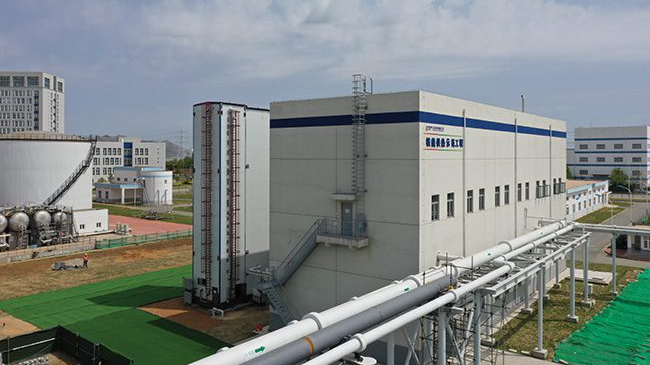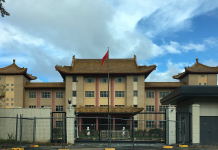BEIJING: Over the past years, China has been committed to switching to clean energy as the country takes concrete efforts to reduce greenhouse gas emissions.
One of the most effective ways to that end is to limit coal heating – a common way to keep warm in winter in the country. Several Chinese provinces have launched nuclear energy heating projects to reduce environmental pollution and ensure energy supply as temperatures drop.
The Haiyang Nuclear Energy Heating Project, China’s largest nuclear heating project, which uses heat generated by nuclear energy in an environmentally-friendly way, is warming the country’s first carbon-free city.
According to the State Power Investment Corp (SPIC), the new heating system was put into operation earlier this week in Haiyiang City in the eastern province of Shandong, a few days before the scheduled start of the four-month winter heating period due to recent cold weather.
As China’s first commercial and largest nuclear heating project, the Haiyang Nuclear Plant occupies 92.8 percent of the country’s total nuclear heating capacity of 365 megawatt (MW), providing clean energy to more than 200,000 residents.
Trials to use steam from nuclear power for winter heating in Haiyang began in 2019, involving 7,000 households.
Unit 1 of the Haiyang Nuclear Plant is the world’s largest cogeneration unit, according to the Shandong Nuclear Power Company Ltd, a subsidiary of the SPIC and owner of the plant.
It has replaced 12 coal-fired boilers and is expected to cut carbon dioxide emissions by 180,000 metric tons, sulfur dioxide by 1,188 tonnes and nitrogen oxide by 1,123 tonnes every heating season, said the company.
In its 14th Five-Year Plan (FYP) (2021-2025) for the country’s energy system, the Chinese government called for a wider use of nuclear energy to heat residential and industrial areas and desalinate seawater to ensure healthier air and less greenhouse gas emissions to avert the disastrous impacts of climate change.
China is committed to fighting climate change, and promoting clean heating is one of the key measures to curb air pollution and limit global warming.
This shift has already had an immediate positive impact on Chinese cities’ air quality.
China used to rely on decentralized small boilers mostly using coal to provide heat during the winter heating season, which has low thermal efficiency and wastes energy.
As a clean and green form of heat, nuclear energy heating has been playing an important role in reducing carbon dioxide emissions and ensuring energy security.
In Haiyan County, east China’s Zhejiang Province, the first nuclear heating demonstration project in southern China is currently under construction. After its completion by the end of the 14th FYP period, the project will provide heating for an area of four million square meters and save 24,600 tonnes of standard coal consumption annually.
–The Daily Mail-CGTN news exchange item






